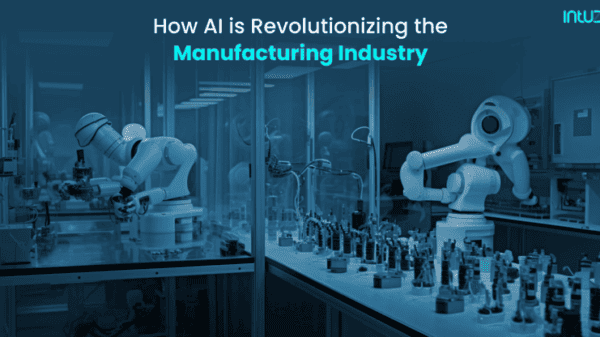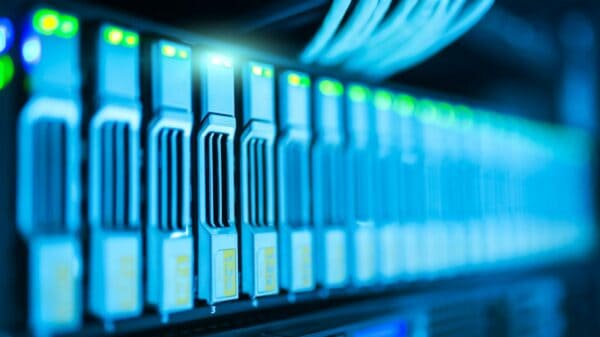For most of us, the Internet of Things represents a fascinating advance in consumer technology. But IoT is hardly just fun and games — by 2020, utilities, manufacturing, and government are projected to be the top three industries utilizing IoT technology.
In fact, governments worldwide are beginning to adopt IoT technologies. South Korea recently built an entire smart city — complete with an automated waste collection system and urban farms — while the Spanish city of Santander has started putting sensors all over the place to monitor light, air pressure, pollution, traffic, and more.
With IoT spending expected to nearly triple between now and 2020 — blossoming into a $1.7 trillion market — keep your eyes peeled for “smart” infrastructure to crop up around your city.
IoT for the G-O-V
Current approaches to municipal infrastructure are labor-intensive and costly. Damaged infrastructure often goes unreported for months, during which time it can pose dangers ranging from bridge collapses to health hazards.
Thankfully, IoT will improve efficiency, decrease costs, and lower risks associated with infrastructural tasks like waste management, traffic control, and roadway and bridge maintenance. Within years, sensors could be embedded in everything from trash receptacles to government buildings that will increase security, decrease personnel costs, and beautify our cities.
Waste management: Wouldn’t it be nice if your garbage bin were emptied whenever it was full instead of stinking up your yard or home until trash day?
Bins equipped with sensors could easily determine when trash pickup is necessary. By adding itself to a customizable pickup schedule, your bin could coordinate with a network of autonomous garbage trucks. A truck in the near vicinity could stop by, effectively eliminating the inconvenience and health risks of household trash.
In addition to being convenient, this model of waste disposal also has environmental upsides. Trucks could automatically sense and reject hazardous waste such as paint containers, lead-acid batteries, and aerosols that require special disposal. And because residents’ trash bills could be adjusted to match monthly usage rather than a flat rate, consumers would have incentive to minimize waste. To bolster these benefits, consumers who regularly use a similarly structured recycling service could receive statement credits on their trash bills.
Traffic management:Isn’t it frustrating when you’re late for work and get stuck in a crowded intersection for what feels like hours? IoT-based traffic management systems could significantly decrease congestion in city streets and highways. Sensors in streets and traffic lights could sense gridlock and communicate to optimize light timing. What’s more, they could save lives by sensing accidents and shutting down intersections. Over time, optimized traffic patterns would also yield environmental benefits by enabling people to reach destinations more quickly — and with less time spent sitting in traffic.
Repairs:City repairs are typically scheduled through a manual check process or as a result of citizen reports. People rarely report damaged street signs, potholes, or nonfunctioning streetlights, so these important repairs often go unrepaired for months.
With IoT sensors built into all-new streets, signs, and streetlights, a single person monitoring the city’s infrastructural grid could spot damage in minutes. Cities could save time and money by eliminating the need for crews to manually inspect the vast networks of streetlights and signs. And if a repair is minor — such as a burned-out light bulb — a specially equipped drone could venture out to fix it. With proper lighting and signage, crime and traffic accidents would slump.
Weather and pollution monitoring:Clean water and air are essential to residents’ health, but it’s often difficult for city officials to pinpoint a source of pollution. A single gas leak or emissions source can take multiple teams of city personnel hours to home in on.With IoT sensors built into streetlights, water pipes, and gas lines, leaks could be identified immediately. By measuring airborne concentrations of pollutants and triangulating with multiple streetlights, city officials could quickly narrow down sources of pollution, such as fires or factories running afoul of emissions regulations. When a building catches fire, sensors could also quickly alert fire department personnel to a potential blaze nearby.
These same sensors could be used as barometers and thermometers to detect weather patterns. Instead of using your ZIP code to look up the weather forecast, sensors in streetlights could yield data precise enough to forecast weather for individual city blocks. IoT sensors could accurately and constantly monitor for natural disasters such as tornadoes, hurricanes, and earthquakes to deliver advanced warnings to vulnerable citizens.
Security: If you’ve ever walked into a government building, you likely had to pass through a metal detector. This improves safety, but it’s not a perfect fix — if a potential gunman carries a weapon into a building, flashing lights and blaring alarms could spur him to shoot.
Advanced detectors using IoT sensors monitor for telltale signs of a dangerous individual in the building — a pistol-shaped bulge in his pocket, microns of airborne gunshot reside, or the presence of lead slugs. By covertly altering security personnel rather than sounding buildingwide alarms, IoT technology could give law enforcement a chance to defuse the situation safely and securely.
There’s no doubt IoT technology will drastically improve government functions, but it does come with risks of its own.
IoT Risks and Rewards
While local government officials are eyeing Santander and other smart cities that have adopted IoT infrastructure, they’re widely concerned about two big challenges: security and power outages.
There’s no global security protocol on IoT technologies, so individual organizations and users are responsible for identifying and reducing associated cybersecurity risks. No matter the application, the connected nature of IoT technologies leaves them vulnerable to hackers who might surreptitiously access backdoors, enabling them to steal information and commandeer the technology for their own purposes. End-to-end encryption, secure passwords, and vigilant network monitoring can reduce these risks, but nothing online is perfectly secure — and governmental use means the stakes are high.
Power outages are also a threat. Nobody knows exactly what would happen if an IoT-connected city’s power network catastrophically failed — which IoT-connected vehicles, streetlights, and roadways would depend on. The damage could range from mild inconveniences to deadly car accidents.
But we ought not let these challenges deter us. There was once a time when we burned candles and wood at night for light and heat, but we’ve since developed a modern electrical grid. Sure, the electrical grid is centralized and more vulnerable to attack than individual candle stashes, but never do you hear people advocating that we return to a time before electric lights. Electricity — even with its inherent risks — has enabled society to be much more productive and less wasteful.
As we move into the IoT era, it’s easy to be caught up in all the exciting new ways to connect homes, cars, and consumer devices, but the industrial and municipal uses are just as extraordinary. Will you live in a smart city in five years? Only time will tell.
Tony Scherba is the president and a founding partner of Yeti LLC, a product-focused development and design studio in San Francisco. Tony has been building software since his teen years, and he has led development on high-profile projects for global brands such as Google, Britney Spears, JBL, MIT, and Linkin Park. Tony and the Yeti team work to develop game-changing products through innovation, workshopping, and rapid prototyping.
Tony Scherba is the president and a founding partner of Yeti LLC, a product-focused development and design studio in San Francisco. Tony has been building software since his teen years, and he has led development on high-profile projects for global brands such as Google, Britney Spears, JBL, MIT and Linkin Park. Tony and the Yeti team work to develop game-changing products through innovation, workshopping, and rapid prototyping.
























































































































































































